In the previous presentation I looked at a general outline of consciousness. I viewed consciousness from a mental and an emotional perspective. The concept of a thought-form was discussed and how this was composed of secondary matter that itself was evolving by first involving. The scary concept of a synthetic thought-form, called an egregore was also outlined. These thought-forms are perpetuated by us and can serve as reservoirs for good or evil. Finally the quality and intensity of a thought-form impacts of the range and effectiveness of that thought. I concluded by mentioning that it was easy to set up a habit through the way we think and feel. It is however much more difficult to lose that habit.
I now wish to look at a series of definitions of consciousness and where they apply. I start with Primary Consciousness. This is what ensouls the lower three bodies of incarnation and is known as the persona. The persona itself is a sub-set of the Self, which is the ensouling monad. We have discussed the term ‘self’ and the fact that we pass through three of them as we evolve in this solar system. At our current state of evolution, our primary self can be defined as our 1st Self.
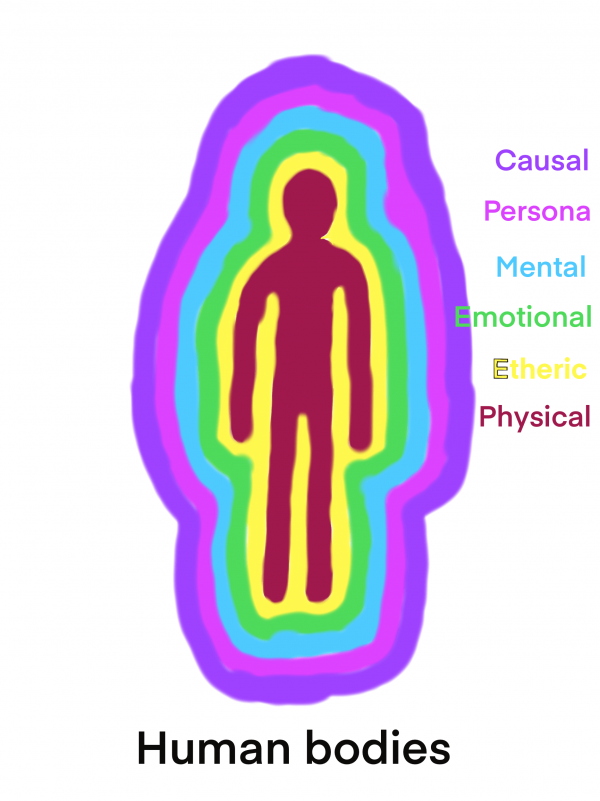
Our Waking Consciousness is a small fraction of our primary consciousness. It is a small part of the monad’s consciousness that is active in the brain. The Super-consciousness is all the levels of consciousness higher than waking consciousness. This includes the Higher-self or soul. It also includes the higher types of emotional and mental molecular consciousness that does not have enough energy to register in the waking consciousness. This feeds back to the concept that a thought-form must have a certain intensity before it has any effect. A monad lodges its focus in either the permanent emotional atom (48:1) or the permanent mental molecule (47:4). From there it activates molecules in the lower sub-divisions of the envelope. Most of humanity is centred in their permanent emotional atom and resonate at the three lowest frequencies of that envelope.
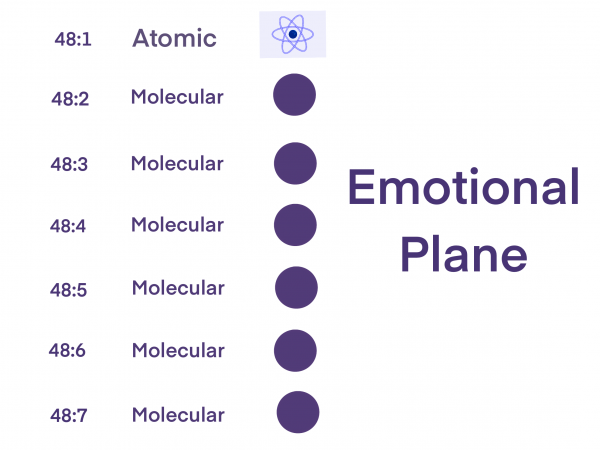
The Sub-Consciousness is that consciousness that is lower than waking consciousness. Most conscious activity of the etheric, emotional and mental bodies do not have enough energy to register in the waking consciousness. Remember that subtle bodies are ‘beings’ in their own right. They are capable of limited conscious activity on their own. This means that the activity of the sub-conscious is partially directed by the subtle bodies and partly by the ensouling monad. This is dependant on the development of the monad.
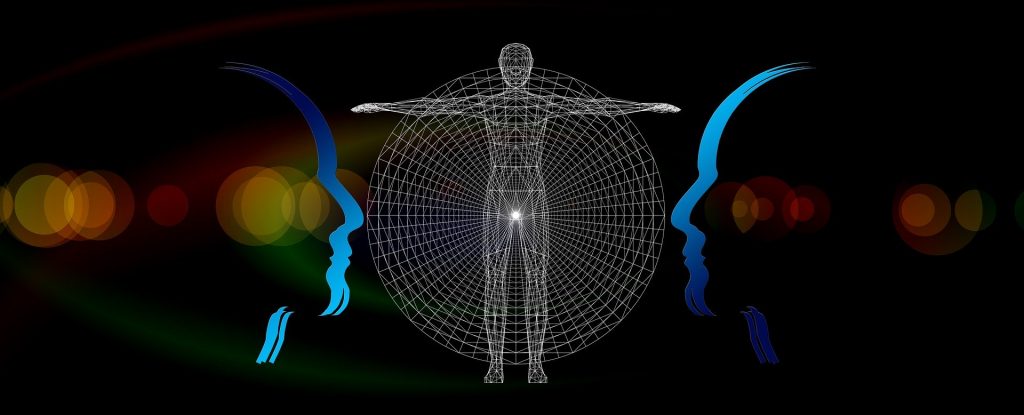
The Meta-Consciousness is the super-consciousness plus the waking consciousness, plus the sub-consciousness. Definitions of the three types of human consciousness are described in future presentations.
Brain Consciousness
From a clinical perspective, brain function and consciousness are correlated. When brain consciousness ceases, physical consciousness ceases as well. However, the consciousness of the monad continues in the subtle bodies. The human brain has evolved in three key stages.
- The Basal brain has its origins in prehistoric reptiles. I am not saying here that we directly evolve from reptiles; we did not. However, the stage of evolution that reptiles have reached currently, shows the same degree of development that we had as developing monads at a much earlier stage of our evolution. That evolution did not even occur on this planet. Now there is an interesting story, which I am going to say nothing more about.
- The Limbic system is shared with our mammalian cousins. This is where we process our memories, regulate our metabolism, deal with emotions and learn. These processes we developed as we passed through the higher animal kingdom on our way to developing our individuality. We eventually gain our own causal envelopes from our guardian angel to store our memories.
- The last stage of our brain evolution was the development of the Neocortex or new brain. This is found in humans and primates. This information has been summarised in the table. The information under the first three headings is part of general scientific knowledge. The last column links the functioning of the triune brain to molecules in the three envelops of incarnation. Also, note the numbering system presented. The range of matter involved is all molecular. No atomic matter is linked directly to brain activity. However, the focus of the controlling agent of the molecules on each subplane does reside elsewhere. This is in the permanent atoms of the etheric and emotional plane, as well as the permanent mental molecule.
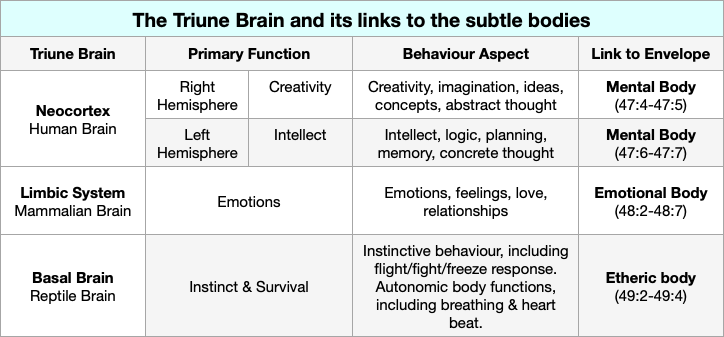
As an interesting aside, when we recall memories, which we can take to represent the truth, our eyes instinctively move up to the left. When we create stories, they move to the right. Observe someone talking to you and watch their eyes. Are they speaking the truth or making up a story?
After all the talk about our subtle bodies, there must be a link between them and the brain. I think you may have got the general gist that the brain is not where we actually think, but is only the relay station conveying our thoughts and emotions to our waking consciousness. So what links to what? Thoughts from our subtle bodies enter our waking consciousness in the following manner:
Intellectual & Creative thoughts, coming from the lower mental body interact with the cells of the neocortex.
Emotional thought, originating in the emotional envelope, ground themselves in the limbic system.
Instinctive thought is linked to the etheric envelope and manifest in the basal brain.
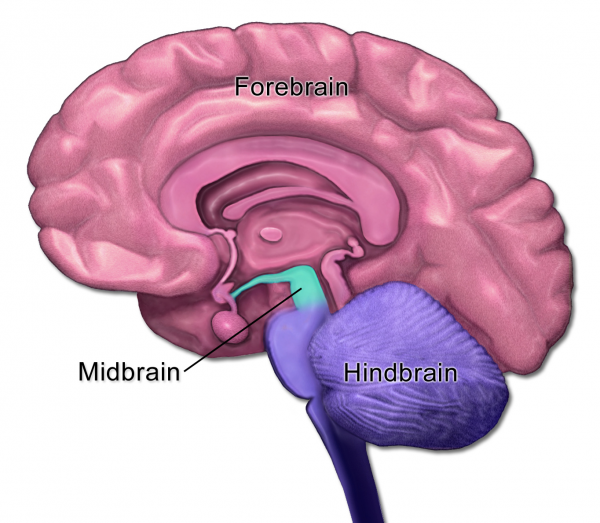
The physical brain and body complex has a powerful influence over our waking consciousness. But what drives the brain? The monad, focused either in the emotional or lower mental body, sends thought-forms to the brain. These thought-forms have to be interpreted and the instructions carried out.
We have talked about a thought-form. So what exactly is it? A thought-form is a picture. It is not a linear set of instructions. This means there is scope for interpretation. How that picture is interpreted depends on the state of the mind. Are you relaxed? Are you tired and grumpy? Either state will affect how the image is perceived and acted upon.
Alcohol, drugs and brain damage all impair how the brain translates the monad’s instructions. I have only been drunk once in my life. I was 16 at the time and I was horrified that when I tried to instruct my body to walk in one direction, it went in a completely different direction. I only needed to experience that once to convince myself never to allow alcohol to affect me like that again. I don’t drink alcohol at all now but that is to protect my etheric web. That story may surface another day.
We are told we only use 10 per cent of our brains. Why? Why do we carry this heavy weight around and use so little of it? There obviously is a latent potential that we have not tapped into yet. Perhaps in the future, this redundant capacity will be utilised in some way.
As we evolve and we develop our subtle bodies, the images transmitted by emotional and mental bodies to the brain, become more complex and powerful. It is at this time that the latent brain capacity is activated.
Body Consciousness
A human is a unity of five beings, contained within five envelopes or bodies. Each has its own consciousness, which is either involving or evolving. This the bodies do independently of one another.
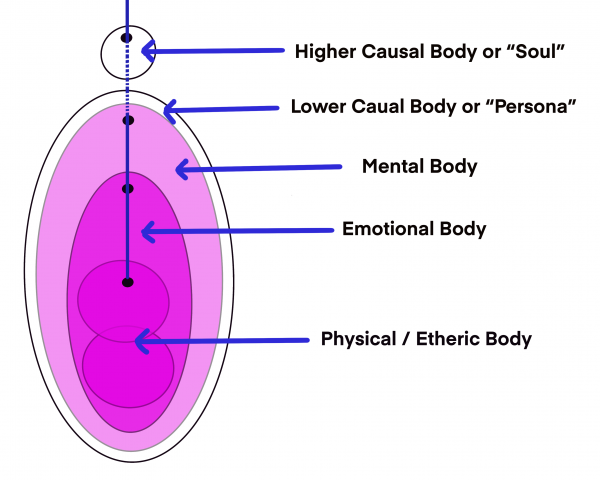
Body consciousness is the collective consciousness of all the atoms and molecules in the subtle and physical body. In order to function coherently, the monad has to wield these five bodies into a cooperative unit. This obviously allows the monad to expand its consciousness. It does this by experiencing objective reality in the three lowest material planes of existence, (49:5-49:7)
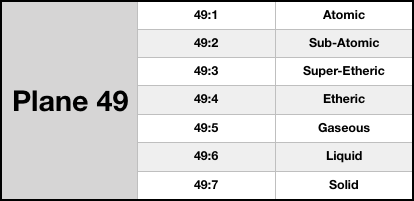
Without the monad focusing its attention on the five envelopes of incarnation, our bodies would just be a collection of secondary and tertiary matter, with basic levels of consciousness. At the same time, without those tertiary and secondary molecules, the monad would not be able to move into the Cosmic Physical Plane. It needs to do this to expand its own consciousness. In this manner, it develops self-awareness and eventually becomes a consciousness co-creator with the Absolute.
As I have mentioned before, tertiary matter can learn basic repetitive skills. In this manner, you can kick a ball or ride a bike. Within your body, the tertiary matter allows the physical/etheric envelope to digest food and to circulate blood. This is all done without your conscious input. You may well ask, where did these envelopes learn to circulate blood in the first place, for it to then happen automatically? The answer to that lies in our close association with the devic world and the fact that they run our bodies for us.
Secondary matter is not found in the physical/etheric envelope. It does, however, make up the bulk of the emotional and mental body. Tertiary matter is also present here in the form of the envelope itself, rather than its contents. Tertiary atoms also comprise the permeant atoms and molecule of these two bodies. The defining property of secondary matter is that it is even less conscious than tertiary matter and is only capable of responding to external stimuli. It has no memory to remember patterns of behaviour.
As already mentioned, permanent emotional atoms (48:1) and permanent mental molecules (47:4) are tertiary matter and so can learn simple behavioural patterns. It is in these structures that we preserve our traits and habits between incarnations.
It is a sobering thought to realise that most people react to everyday events without actually thinking. They live their lives on auto-pilot. If you wish to break this automatic response in your life, it takes a single act of will to do so. If you wish to rid yourself of that habit for good, then repeated acts of will are needed. As I have said, it is easy to form a habit. It is much more difficult to break it. Now you know why. You are not dealing with a memory component in your brain. You are training living beings that have their own agenda. You need to get them to cooperate with you on your agenda. Good luck!
On this particular topic, it remains for me to say, wake up and take control of your lives.

By now you should remember that our emotional consciousness is seated in our emotional bodies, not in our stomachs or brain. In that emotional envelope, the focus of our consciousness resides in our permanent emotional atom.
The monad, focusing through this atom is able to perceive vibrations in the emotional matter and convert it into consciousness. There is a hierarchy of responses that occur at various levels in the emotional envelope. Molecules vibrating on sub-planes 48:7, 48:6 and 48:5 are all stimulated by negative emotions. These include fear, hate, anger, desire, egotistical pride, guilt, grief and despair. That is enough of a list to be contending with but I am sure you can name many yourself. Just remember, these ‘feelings’ you have are all attracted into your emotional envelope when your consciousness focuses on such thoughts. You stimulate the molecules that are already present in your emotional envelope. You also attract in more molecules from the surrounding emotional environment. This happens when you persistently focus your attention on these feelings and increase their strength.
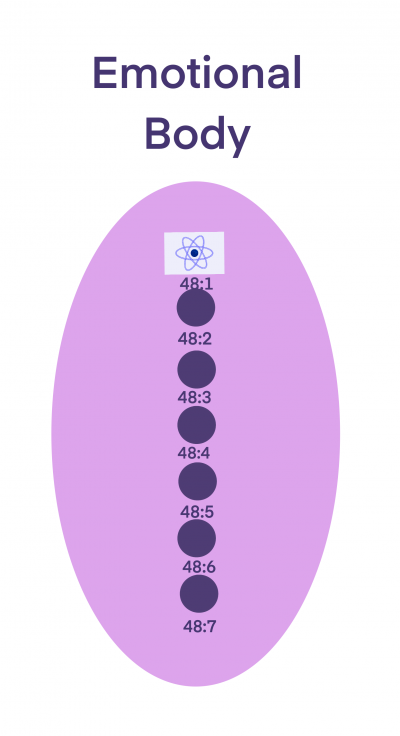
On the 48:4 subplane, the emotional molecules vibrate in a neutral manner. The emotions that are experienced on this subplane are willingness, courage, confidence, hope and trust. If these emotions are felt in abundance and the lower emotions are forgotten, then those molecules vibrating at that lower frequencies eventually diffuse out of your emotional body. They go back into the reservoir of the greater emotional world in which we all live. This is the collective emotional body of Humanity. It is also contained within the emotional body of the Planetary Logos, but that is for another day.
On the highest two molecular levels of the emotional body, 48:3 and 48:2, we reach the realms of what is deemed positive emotions. These include happiness, enthusiasm, love, forgiveness, admiration and optimism.
Egoic Egg
There is a reason that our emotional bodies are described as being egg-shaped. The bulk of the molecules they contain tend to cluster around the lower planes. This is where we have an abundance of molecules. The aim of the game is to become an inverted egg!
Emotional consciousness is not just about perceiving moods, emotions and desires. The emotional body can think, but it can’t do it rationally. The reason is that these thoughts are influenced by emotions and desires. Most thoughts concerning yourself, others, faith and worship are all emotional. As I have said repeatedly, the vast majority of people incarnated today are at an emotional stage of development, not a mental one. They think with their emotions.
Tangled Emotions
You may have noticed that I said that the emotional body can think. How can it do this when it is designed to feel and not think? The reason is that our mental and emotional bodies are heavily intertwined. This results in emotions colouring almost every thought we have or action we take. Rather than thoughts guiding our emotions, it is our emotions that guide our thoughts. We truly are ‘blinded to reality’.
People that function predominantly at the emotional level are concerned with the way things are said. People with mental polarisation are concerned with what is being said. If a person is functioning from an emotional rather than a mental perspective, they find it difficult to control their emotions. The reason for this is that you need higher levels of energy to bring those emotions under control. People with an emotional disposition tend to experience highs and lows, with periods of calm in between. They are like a boat adrift on the sea, under constant threat of being swamped by the waves.
In the hierarchy of an evolving monad, the emotional plane is below the mental plane. It vibrates at a lower frequency. These frequencies are driven by desires and passion, which are irrational. This can lead to emotionality, which feeds conflict. Rationality, on the other hand, brings resolution and is driven from a mental perspective.
In my next presentation, I wish to continue to look at the various levels of consciousness. I continue with mental consciousness, which is divided into rational and abstract thought. I then go beyond mental consciousness into Unity and Spiritual consciousness.



Good stuff – thanks Kazim